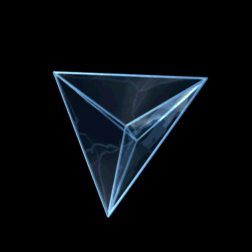Crowd simulation is the process of simulating the movement of a large number of entities or characters; this technique is now commonly used in 3D computer graphics for film. While simulating crowds, observed human behavior and interactions are taken into account to replicate collective behavior. It is a method of creating virtual cinematography.
The need for crowd simulation arises when a scene calls for more characters than can be practically animated using conventional systems, such as skeletons/bones. Simulating crowds offer the advantages of being cost effective as well as allow for total control of each simulated character or agent.
Animators typically create a library of motions, either for an entire character or for individual body parts. To simplify processing, these animations are sometimes baked as morphs. Alternately, the motions can be generated procedurally â€" i.e. choreographed automatically by software.
The actual movements and interactions of the crowd are typically implemented in one of two ways:
Particle Motion

The characters are attached to point particles, which are then animated by simulating wind, gravity, attractions, and collisions. The particle method is usually inexpensive to implement, and can be done in most 3D software packages. However, this method is not very realistic because it is difficult to direct individual entities when necessary. Also, motion is generally limited to flat surfaces.
Crowd AI

Entities â€" also called agents â€" are given artificial intelligence, which guides the entities based on one or more functions, such as sight, hearing, basic emotion, energy level, aggressiveness level, etc. Entities are given goals and then interact with each other just as members of a real crowd would. They are often programmed to respond to changes in their environment; for example, they may climb hills, jump over holes, scale ladders, etc. This system is much more realistic than particle motion, but it is very expensive to program and implement.
The most notable examples of AI simulation can be seen in New Line Cinema's The Lord of the Rings films, where AI armies of thousands of characters battle each other. This crowd simulation was done using Weta Digital's Massive software.
Sociology

Crowd simulation can also refer to simulations based on group dynamics and crowd psychology, often in public safety planning. In this case, the focus is just the behavior of the crowd, and not the visual realism of the simulation. Crowds have been studied as a scientific interest since the end of the 19th Century. A lot of research has focused on the collective social behavior of people at social gatherings, assemblies, protests, rebellions, concerts, sporting events and religious ceremonies. Gaining insight into natural human behavior under varying types of stressful situations will allow better models to be created which can be used to develop crowd controlling strategies.
Emergency response teams such as policemen, the National Guard, military and even volunteers must undergo some type of crowd control training. Using researched principles of human behavior in crowds can give disaster training designers more elements to incorporate to create realistic simulated disasters. Crowd behavior can be observed during panic and non-panic conditions. When natural and unnatural events toss social ideals into a twisting chaotic bind, such as the events of 9/11 and hurricane Katrina, humanity’s social capabilities are truly put to the test. Military programs are looking more towards simulated training, involving emergency responses, due to their cost effective technology as well as how effective the learning can be transferred to the real world. Many events that may start out controlled can have a twisting event that turns them into catastrophic situations, where decisions need to be made on the spot. It is these situations in which crowd dynamical understanding would play a vital role in reducing the potential for anarchy.
Modeling techniques of crowds vary from holistic or network approaches to understanding individualistic or behavioral aspects of each agent. For example the Social Force Model describes a need for individuals to find a balance between social interaction and physical interaction. An approach that incorporates both aspects, and is able to adapt depending on the situation, would better describe natural human behavior, always incorporating some measure of unpredictability. With the use of multi-agent models understanding these complex behaviors has become a much more comprehensible task. With the use of this type of software, systems can now be tested under extreme conditions, and simulate conditions over long periods of time in the matter of seconds.


Posting Komentar